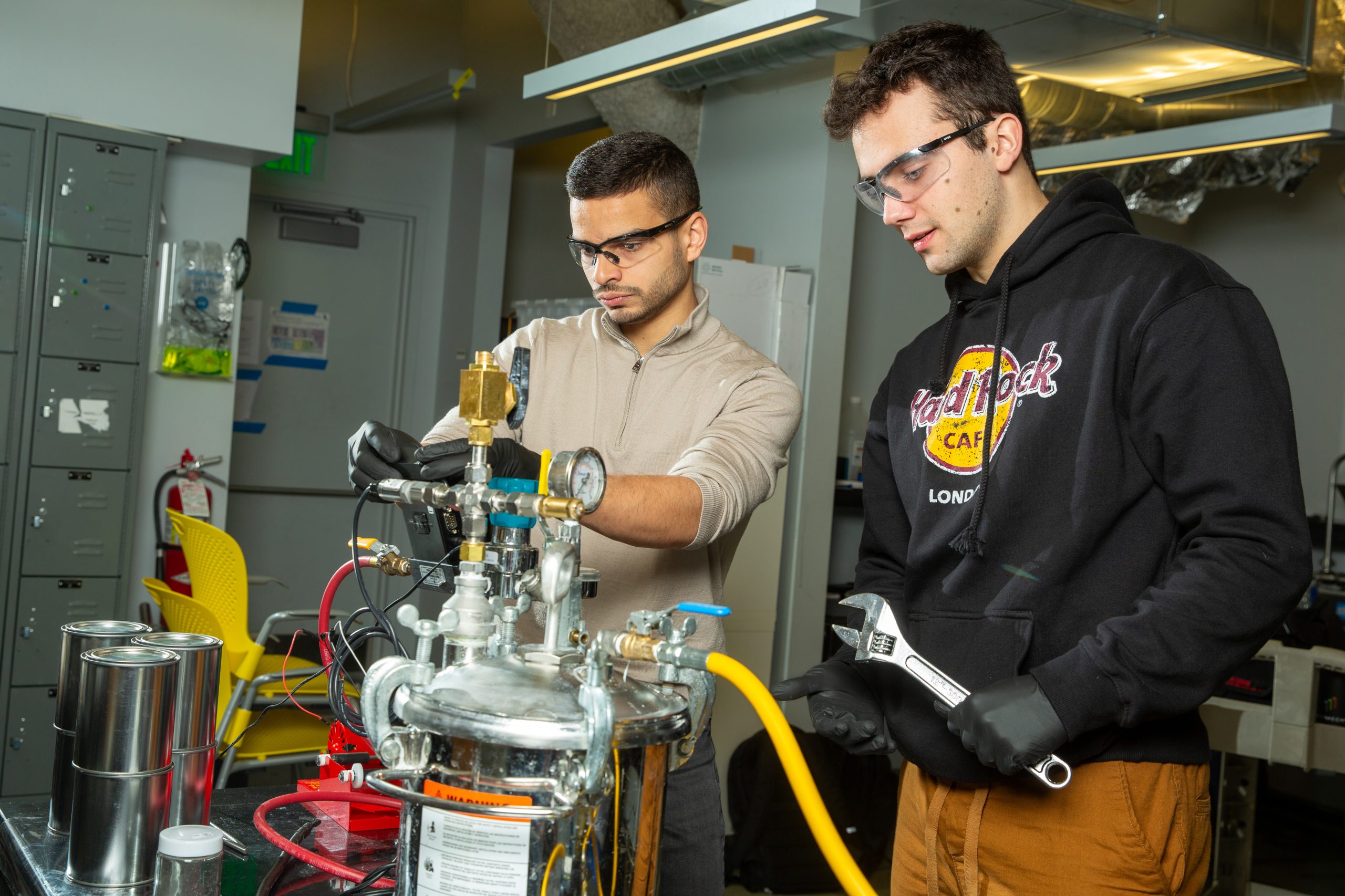Silicon Valley plans to clean up by investing in green energy.
Tijn Touber | September 2008 issue

“If the best way to create the future is to invent it, we say the second-best way is to finance it.” John Doerr is only half joking. He’s one of the most influential venture capitalists in Silicon Valley, California, and he knows a thing or two about financing the future. As a partner at Kleiner Perkins Caufield & Byers (KPCB), one of the Valley’s best-known venture capital firms, Doerr has enjoyed a phenomenal run of success, backing technology companies such as Sun Microsystems, Google and Amazon (as well as the odd failure, such as computing start-up GO Corporation, which famously burned through $75 million of venture funding). In the process, he’s made himself a personal fortune in excess of $1 billion.
But ask him what he’s doing now and you won’t hear buzz phrases such as “Web 2.0.” These days, Doerr is firmly focused on clean technology-in particular, energy technology that can save the planet from global warming. Recently, his firm set up a $500 million fund for investment in green technology, on top of the $200 million it has already invested.
This doesn’t mean Doerr has ditched capitalism for worthier goals; his new direction is still driven by an instinct for profit. “Remember the Internet? Green tech is bigger,” he told an audience at TED, the annual “Technology Entertainment Design” conference in Monterey, on the southern fringe of Silicon Valley, last year. “This could be the biggest economic opportunity of the 21st century.”

Doerr tantalized his audience with the mouth-watering fact that the global energy business is worth $6 trillion per year. That puts in the shade anything measured in mere billions, such as the market for computers. “Energy is the mother of all markets,” he said.
Even a minuscule slice of such a vital industry would keep a venture capitalist in beige chinos and blue shirts for life. But there’s more to this story than the search for riches.
In 2000, a financial earthquake hit the area of green rolling hills just south of San Francisco known the world over as Silicon Valley. The Valley had enjoyed a decade of seemingly unstoppable growth—the greatest period of legal wealth creation in history, as Doerr famously put it at the height of the boom. The trick had been to finance and build the technology behind the dot-com revolution. In the space of 10 years, the Internet changed the planet, bringing fantastic wealth to the small band of Silicon Valley venture capitalists who’d financed the companies behind it.
It took only a few months, however, for billions to be wiped off the value of these companies. Many of them disappeared overnight. Within a year, the Valley’s once-buzzing cafés, restaurants and networking bars were empty. Many companies and individuals faced ruin, and Silicon Valley was transformed from a hive of entrepreneurial activity to a ghost town of empty office blocks and Internet has-beens.
Eight years on, though, the Valley is buzzing again. The people who funded the extraordinary success stories of the 1990s have taken on a bigger challenge. This time they want to save the planet.
Venture capitalists are falling over themselves to invest in green energy. In 2007, they invested $1.1 billion in clean energy technology, according to CleanTech Group. That’s an increase of 94 percent over 2006, a rate of growth that’s bringing back happy memories of the dot-com boom. Even the credit crunch has so far had little impact, according to a survey by businessgreen.com.
Silicon Valley venture capitalists aren’t the first investors to wake up to the fact that an energy technology able to compete with coal or gas is going to clean up in more ways than one. But their mindset is different. By applying the techniques they perfected in the dot-com era for rapidly turning ideas into money, the Valley venture capitalists have the idea they’ll be able to reach the ultimate goal—energy that’s cheaper and cleaner than coal or gas—in just a few years.
In support of this ambitious, perhaps even arrogant, claim, these venture capitalists point out that they’ve done it before. Half a century ago, this part of California was a small farming community known for apricots, not Apples. Then in 1956, William Shockley, co-discoverer of the transistor, set up a company in Mountain View to commercialize the invention. The move triggered the birth of an entirely new industry based on the silicon chip, and spawned household names such as Intel and Hewlett-Packard.
Behind the scenes, an extraordinary support network emerged to help set up, finance and staff the new companies. The ideas and minds came from nearby universities such as Stanford and Berkeley, the administrative know-how from a web of legal and accounting firms and the money from venture capitalists—wealthy individuals prepared to stake money on high-risk start-up companies in exchange for shares. Silicon Valley became a melting pot of innovation, entrepreneurship and risk-taking unrivalled anywhere.
Such was its unique ethos that the Valley coped well with the economic downturns of the ’70s, ’80s and ’90s. If anything, it thrived on them, turning the hard times to good use by sniffing out ideas that would help it bounce back when the wind changed. In this way, those in the Valley found themselves well placed to finance and build the Internet revolution that ended up producing the Amazons, Googles and Yahoos that now dominate the online world.
And when the dot-com bubble burst in 2000, the Valley did what it had done before: It bided its time gracefully until the next big opportunity came along.
A hint of what that opportunity would be came in 2003 as the price of oil began to rise, and when it skyrocketed, Valley financiers were galvanized to action. The energy business needed reinventing and they were ready for the challenge.

Vinod Khosla, one of the Valley’s most successful venture capitalists, explains how the skills they gained from the high-tech industry now put them in an optimal position. “They’re about managing technology risk,” he says, pointing out that whether you’re dealing with computers or energy, those risks are the same. Khosla is no stranger to managing risk. He co-founded Sun Microsystems in 1982 (with funding from Doerr), making a small fortune in the process. In 1986, with the personal computer revolution getting into its stride, he left to join Doerr at KPCB. By 2004, a series of entrepreneurial hits had put him in a position to start his own investment firm, Khosla Ventures.
Khosla has become one of the Valley’s biggest investors—and believers—in the new energy technologies. Improving energy efficiency or changing laws will only deliver small incremental gains, he says. “A new technology, on the other hand, can make a 200 percent or a 400 percent or a 1,000 percent difference. Technology is a sure-shot solution.”
The hard part is picking the right technology. To make that call, Khosla applies a number of tests learned from his years investing in computing and Internet ventures. A key factor is whether the rate of innovation is fast enough. A rapid innovation cycle—the time it takes to turn promising ideas into goods that can be sold—is crucial to progress, he says, because it allows new ideas to hit the market quickly and gives investors the prospect of a fast return.
To illustrate the role of innovation cycles, Khosla cites two contrasting ways of generating electricity: nuclear energy and solar thermal technology. “It takes 15 years to build a nuclear power plant,” he points out. So while there may be exciting ideas in the field that could have a big impact, the rate of innovation is too slow to make it an attractive investment.
Solar thermal technology, which uses the sun’s heat to generate steam that drives a turbine, is at the opposite end of the spectrum. It takes just two years to build a solar thermal plant and in that time the technology will have improved further. “With solar thermal, I can fit several cycles of innovation into the time it takes to build a nuclear plant,” Khosla says.
Last year, Khosla Ventures and KPCB invested a total of $40 million in Ausra, a Palo Alto solar thermal company which claims to be already generating electricity at competitive rates. Advocates of solar thermal energy, Khosla among them, say the U.S. could eliminate half its greenhouse emissions by installing solar thermal technology in an area less than 150 kilometres square (58 miles square). Solar thermal power isn’t suitable for every climate, but in places where the sun shines regularly and predictably it’s gaining in popularity as successive innovation cycles improve efficiency and drive down costs.
Just as important as the innovation cycle is how well a technology “scales”: Does the product get cheaper as it’s made in larger quantities, like the silicon chip?
Consider the biofuel ethanol. It’s most commonly made from crops such as corn (maize) and costs some 65 cents a litre in the U.S. (less than $2.50 a gallon), significantly less than the four bucks a gallon Americans are paying for gas. But far from offering economy-of-scale benefits, corn ethanol gets more expensive as you make more of it, not the least because corn is also a food crop. Converting it into ethanol pushes up demand and triggers a spiralling increase in prices. And the more corn ethanol you make, the higher the cost of your feedstock.
There is, however, an alternative biofuel that scales well. Cellulosic ethanol can be made from almost any plant matter and so can incorporate material such as corn stalks that would otherwise go to waste. Khosla says companies like Range Fuels and Macoma (both of which he funds) produce cellulosic ethanol for less than 55 cents a litre (some $2 a gallon). A practically limitless supply of feedstock means the more cellulosic ethanol you make, the cheaper it becomes. Other approaches that pass Khosla’s tests include using synthetic biology (a holistic way of building new systems) to produce biofuels and thin-film solar photovoltaics (see the sidebar on the next page, “Ripe for exploitation”).
Where Doerr and Khosla have led, others are following. One such pioneer is Lightspeed Venture Partners of Menlo Park, California. Principal investor Andrew Chung says decisions about funding clean technology are made more difficult by the complex economic environment in which energy companies operate. Solar power, for example, still relies on subsidies, which are dangerously dependent on public opinion and politics. On top of that, solar power companies have to sell their product in a market sensitive to regulatory changes.
These unpredictable and unfamiliar factors add significantly to the risk. Nevertheless, Lightspeed funds a range of companies that are developing everything from “clean coal” to bioengineered algae for biofuel manufacture.
Ira Ehrenpreis of Technology Partners, a venture capital firm in Palo Alto, California, that has taken a similar plunge, says many of these worries have eased as public and political opinion have swung in favour of green energy. “We have come a long way, from a country that was divided over green energy to one that is essentially united,” he told a meeting of Silicon Valley’s legendary networking society, the Churchill Club, in January.
It’s not just venture capitalists who are crowding into green tech. Google’s philanthropic arm, Google.org, has made a series of investments, including $10 million in solar thermal company eSolar and another $10 million in Makani, which hopes to launch a fleet of high-flying kites to extract energy from the wind. Investors are also starting to look beyond energy-generating technologies to other aspects of the energy economy. Technology Partners has backed APX, which helps companies buy, use and trade energy more efficiently, and Tesla Motors, which makes an electric sports car that can go from zero to 60 miles (almost 100 kilometres) an hour in 3.9 seconds.
So will Silicon Valley’s ongoing investment in the evolution of green technology make an Earth-changing difference? “We need people who are looking at over-the-horizon technologies,” says David Downie, director of the Global Roundtable on Climate Change, a group of influential academics, companies and government representatives brought together by the Earth Institute at Columbia University in New York. Yet while he acknowledges that the technologies being fostered by the venture capitalists will have an impact, he doesn’t feel they’ll ever be the whole solution. “Silicon Valley can’t negotiate with the Chinese and U.S. governments; it can’t mandate new policies on deforestation and zero emissions,” he says.
It’s a limitation the venture capitalists accept too. “Technology can’t solve the problem of deforestation,” says Khosla. The solution will be a team effort that includes entrepreneurs, politicians and ordinary people. “Can Silicon Valley save the planet? Not on its own,” says Downie. But ask him whether we can save the planet without the Valley and he pauses. “That’s much more interesting. There’s no question we need it.”
Ripe for exploitation
The world’s 50-year addiction to oil has to end sometime. For venture capitalists, that represents an opportunity because competing energy sources have been held in check so long. “There is lots of low-hanging fruit because oil companies have been so conservative,” says Vinod Khosla, a Silicon Valley venture capitalist who’s convinced we’ll never control global warming unless we embrace green energy. Here’s a taste of the “low-hanging fruit” Silicon Valley’s venture capitalists are feasting on.
- Amyris Biotechnologies: Genetically engineers microbes to produce renewable biofuels. Investors include: Duff Ackerman & Goodrich Ventures; Khosla Ventures; Kleiner Perkins Caufield & Byers (KPCB); TPG
- Ausra Founders of this solar thermal company say they can generate large-scale green electricity at competitive costs. Investors include: Khosla Ventures; KPCB
- Konarka Develops plastic solar cells that can be printed onto almost any surface. Investors include: Asenqua Ventures; Draper Fisher Jurvetson; Presidio Venture Partners; Silicon Valley Bank
- Range Fuels Aims to have the first commercial-scale cellulosic ethanol biofuel plant operating next year. Investors include: Khosla Ventures; Passport Capital
- Stion Develops high-efficiency thin-film solar cells. Investors include: Khosla Ventures; Lightspeed Venture Partners
- Transonic Combustion Improves the efficiency of petroleum-based engines to increase mileage and reduce greenhouse gas emissions. Investors include: Khosla Ventures; Venrock












